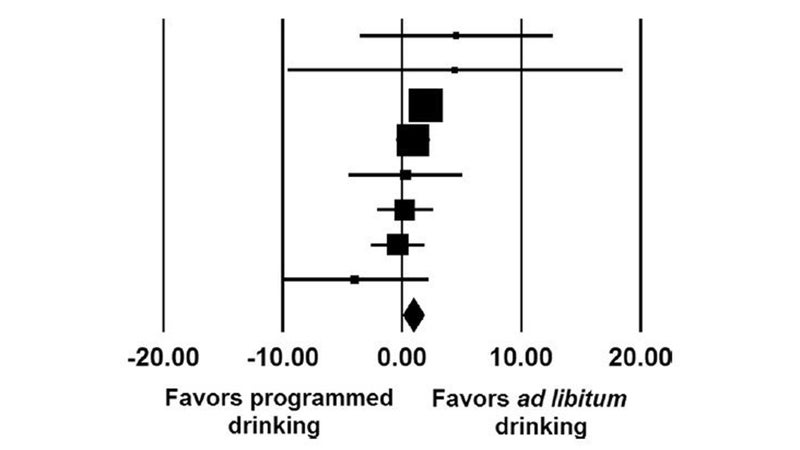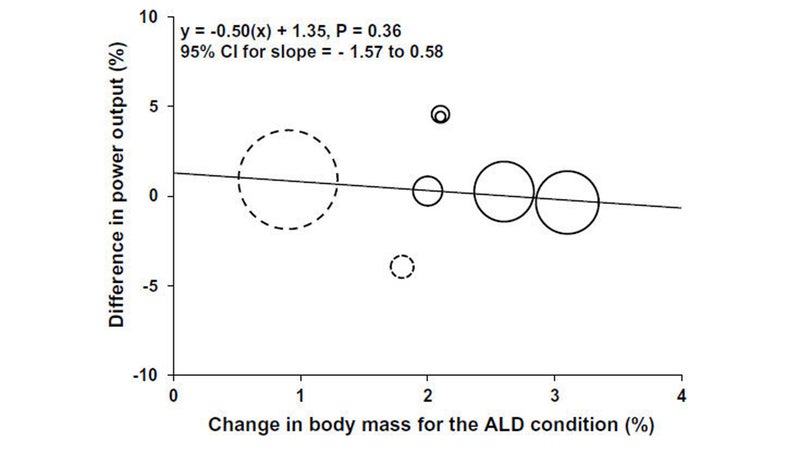Back in 2007, the journal Medicine & Science in Sports & Exercise published a debate between two exercise scientists on what seemed like a completely asinine topic: “” It had never occurred to me that anyone might doubt the obvious truth of this premise—so I was shocked when I saw that the author of the dissenting opinion was Tim Noakes, the author of what I viewed as the definitive running science book, Lore of Running. And by the time I finished reading the debate, I was as surprised as anyone to discover that I agreed with Noakes.
Since then, the dehydration debate has gone mainstream. Noakes published a book called Waterlogged in 2012, and pretty much every major publication interested in exercise and fitness has published some variation on the “everything you knew about hydration is wrong” theme. I’ve written ���� myself. But the debate hasn’t gone away—or been settled one way or another. In fact, as time has passed, my views on hydration have gotten blurrier rather than clearer.
So the publication of a in the journal Sports Medicine, from Eric Goulet of the University of Sherbrooke in Canada and Martin Hoffman of the University of California Davis Medical Center, offers a good excuse to take stock of where the debate currently stands. Pondering the role of dehydration in sport leads to all sorts of seemingly esoteric digressions: How do you ? between drinking “to thirst” and drinking “as much as you want”? What happens to your sense of thirst when you’re ? But the new review cuts straight to the bottom line and asks the practical question: Do endurance athletes perform better when they drink as much as they want, or when they follow a pre-planned drinking protocol that aims to minimize their fluid losses?
Before getting to the results, it’s worth laying out a few points that scientists generally do agree on. One is that not drinking at all, or not paying attention to your thirst cues, will eventually hurt your performance.
Another is that even if you do pay attention to your thirst cues and drink when you feel like it, you will lose a substantial amount of fluid during prolonged exercise on a moderate or warm day. Thirst is not sufficient to convince you to replace all your sweat losses as they happen. As Noakes and others have pointed out, your body can make some changes internally to keep the composition of your blood roughly stable, and you’ll produce some extra water internally as a byproduct of the metabolic fuel you burn during exercise. But the bottom line is that you’ll lose substantially more weight than you would if you were following the advice of the American College of Sports Medicine, which aiming to lose less than 2 percent of your starting weight.
The key question is whether this��“voluntary dehydration” actually matters. Does drinking “ad libitum” (the scientists’ fancy term for “as desired”) hurt or help your performance compared to following a pre-planned hydration strategy that minimizes fluid losses? Goulet and Hoffman pooled the results of eight experiments with a total of 82 subjects that investigated this question in treadmill and stationary bike tests lasting between one and two hours. On average, the subjects who drank to thirst lost 2.1 percent of their starting weight, while those who drank according to a plan lost 1.0 percent. Here, in the form of a “,” is what the pooled data looks like:

In this plot, each black square represents a different study. If the square is to the right of the center line, it means that the study found that unplanned ad libitum drinking led to better results; if the square is to the left, it means that pre-planned hydration led to better results. The bigger the square, the more subjects were in the study. Notice that the biggest squares cluster near zero, while the strongest effects (both positive and negative) come from the tiniest studies. It’s probably worth noting that the two data points strongly favoring ad libitum (~4.5 percent advantage) come from Noakes’s lab; the data point strongly favoring pre-planned (~4 percent advantage) comes from the lab of Stavros Kavouras, whose studies consistently find that even mild dehydration harms performance.
The triangle at the bottom of the graph tells us what happens when you pool all the data together. The result is a slight 0.98 percent advantage in favor of ad libitum drinking, which is statistically significant but in practical terms, the authors emphasize, “likely trivial.” In other words, they write, “[b]ased on our findings we cannot favor, encourage, or discourage the use of one drinking strategy over the other.”
One can, of course, dig a little deeper into the data. The studies all used slightly different hydration plans and exercise protocols. Is it possible, for example, that hydration plans only work if they completely prevent net fluid loss? Or that drinking to thirst only works with relatively moderate exercise intensities? But none of these sub-analyses yield any further insights. For example, the percentage of body mass lost while drinking to thirst varied from 0.9 to 3.1 percent. Here’s how those differences affected the performance compared to planned drinking (ALD is “ad libitum drinking”):

Again, the big circles represent the big studies, and they tend to cluster around zero, meaning that performance was similar between drinking to thirst and planned drinking. The little circles, representing the smaller studies, are farther away from zero—but there’s no systematic trend where bigger weight loss corresponds to better or worse performance.
It would be easy to conclude from this data that planned drinking is pointless and you might as well just drink when you’re thirsty. But even though both authors are notably skeptical of conventional hydration wisdom (“Drink before you’re thirsty, otherwise it’s too late, because even mild dehydration will make you slow and !”), they don’t settle for the easy answer. Instead, this is their advice: “[U]ltimately, it is up to athletes to decide which hydration strategy is likely to optimize [endurance performance], while taking into consideration individual responses to the heat and the plethora of factors associated with the planning and logistics of training or competition.”
Why are they hedging their bets? They point out a few reasons that thirst may not always be reliable. One is that your thirst sensations , making you less sensitive to changes in fluid levels. Another is that temperature extremes alter the hormonal responses to hydration levels: when you’re cold, not only do you feel less thirsty, but your levels of the key fluid-regulating hormone arginine vasopressin r. Other factors like psychological stress and stomach discomfort can also influence your desire to drink even when you would otherwise be thirsty.
And then there’s the practical issue. In hydration studies, “drinking as desired” means grabbing a bottle that’s sitting right next to the treadmill or exercise bike whenever you want. In a marathon, it means grabbing a cup (or, if you’re a elite runner, a bottle) once every 5K or so and trying to splash some into your mouth as you run past at the fastest speed you can sustain. It’s logistically impossible to drink every time the spirit moves you, so the comparison between drinking according to plan or to thirst in that context gets very blurry.
I realize that “it depends” isn’t particularly useful as practical advice. The more I’ve learned about hydration research, the harder it’s gotten to make simple definitive statements. But for what it’s worth, here’s my current—and very subjective—take on how some of these pieces fit together:
- In training (and in daily life), don’t stress about hydration. Be aware that it’s important, and be responsive to internal cues like thirst, and you’ll be fine. It’s perfectly okay, and , to be temporarily thirsty sometimes. (And you don’t need to force down a gallon of water a day to stay healthy.)
- In competition, two things change. One is that the circumstances make it harder to respond naturally to thirst; the other is that very slight changes in performance that are irrelevant in other contexts become important. The evidence on whether mild dehydration harms performance in any meaningful way is sparse, conflicting, and deeply flawed—but my guess, at this point, is that (all else being equal) it does. One of the ways we’ve evolved to protect ourselves from dehydration, in addition to thirst and hormonal changes, is that —and that may translate into slower race times.
- Dehydration may slow you down—but so too does rehydration. The pre-planned regimens in the new review typically had drinking rates of about a liter (34 ounces) per hour, and sometimes higher. That’s a lot to choke down while you’re breathing hard, and a lot to have sloshing around and potentially upsetting your stomach. If nothing else, it’s adding more than 2 pounds to your weight every hour. In other words, rehydrating aggressively may solve one problem but create others. The lack of any big effect in the review may simply indicate that the pros and cons of drinking more tend to balance out on average, not that dehydration has no impact.
So, in the end, maybe it really does depend. If you’re a super-heavy sweater, the balance may shift in favor of a more aggressive hydration strategy. If your stomach rebels when you try to drink on the run, maybe it’s not worth forcing it (though that skill that can be improved with practice). And of course, in the real world, you can never entirely separate hydration from fueling: your drinking choices will also depend on—or perhaps even be dictated by—how many and what type of calories you’re trying to take in. But, speaking of endlessly contentious debates, let’s leave that one for another time.
My new book, , with a foreword by Malcolm Gladwell, is now available. For more, join me on and , and sign up for the Sweat Science .


